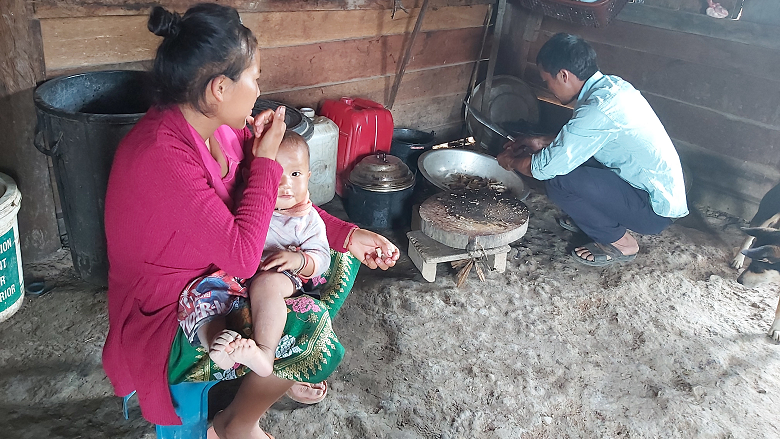The objective of the Health and Nutrition Services Access Project (HANSA) is to expand access to quality health and nutrition services in targeted areas of Lao PDR. It is focused on women and children and seeks to improve nutrition outcomes in the country. Intrinsic to the achievement of this goal is the question of gender and equity which holds sway on who can get to these services.
The World Bank, Global Fund (GF) and Australian Department for Foreign Affairs and Trade (DFAT) jointly carried out a gender assessment from May to August 2020. The assessment, undertaken with the support of the Advance UHC Multi-Donor Trust Fund, identified gaps and opportunities to strengthen the gender responsiveness and inclusiveness of HANSA implementation. On the basis of its findings, a Gender Action Plan for the project was developed with the Lao Ministry of Health (MOH).
Indeed, evidence shows that without an explicit focus on gender equity and its role in reducing other forms of exclusion and disadvantage, progress towards UHC can fail. That is why HANSA’s gender assessment was launched with high-level commitment under the direction of the MOH’s Cabinet Office.
HANSA is a US$36 million project, which will be implemented between 2021 and 2025 and is co-financed by the government of Lao PDR, the World Bank, GF, and DFAT. The project aims to strengthen the country’s health system and improve the quality and coverage of service by providing funds to health centers and departments, with support benchmarked against performance.
The assessment team consulted key stakeholders in the MOH, the Lao Women’s Union, and Lao Youth Union. The team conducted field visits and consulted with provincial and district health offices, health center staff and potential beneficiaries in the target communities. This process also saw the involvement of a broad range of development partners, international non-governmental organizations and local civil society bodies.
While the gender assessment report will be published as a health, nutrition and population (HNP) discussion paper, its findings were discussed with the MOH and Cabinet Office during consultative meetings in 2020, which have been reflected in the Gender Action Plan. Below are some of the key elements of the plan:
- Implementation of a Quality and Performance Scorecard (QPS) to rank health centers on their quality of care and service readiness. Grants are given based on their performance. Assessment indicators cover physical accessibility of the centers, clinical competencies for nutrition and care of pregnant women, and counselling competencies for adolescent reproductive health and violence against women.
- Strengthening the quality of care and health workforce through affirmative action to deploy a more diverse ethno-cultural cohort of clinical health staff to areas with non-Lao-Tai speaking populations. Clinical, counselling and communication guidelines for safe abortion, for care of gender-based violence survivors, and for vulnerable groups such as People Living with HIV and tuberculosis (TB) patients, are also being developed.
- Use of disbursement linked indicators (DLIs), or results-based instruments that dispense funds when defined targets are achieved. The DLIs, also known as performance-based conditions (PBCs), are designed to improve the accessibility and quality of nutrition, maternal and child health services, and the delivery of TB and HIV priority public health programs. There are also DLIs targeting improvement of health information systems, financial management and health security preparedness.
- Strengthening data management to include information on sex, age and ethnic disaggregated data for better decision-making, monitoring who is and who is not benefitting from the project, and adjusting the DLIs as necessary to increase gender and inclusion impact.
- Setting up a Gender and Equity Innovation Fund to support local solutions to overcome local gender and inclusion challenges at health centres and district health offices. The fund’s objective is to stimulate local innovation initiatives to translate gender and health equity objectives into practical actions, and inform policy and technical departments of frontline solutions.
HANSA also aims at enhancing the sustainability of public health programs that include maternal and child health, immunization, and TB and HIV prevention. Its special focus is on reducing malnutrition in four northern provinces—Oudomxay, Phongsaly, Huaphan and Xiengkhuang. These provinces are home to multi-ethnic groups living in remote areas and have difficulty accessing health care services.
The project will also improve detection and treatment for TB, as well as increase coverage of HIV testing of key populations and vulnerable groups through an integrated service delivery model. HANSA builds on the achievements of the earlier World Bank Health Governance and Nutrition Development Project (HGNDP).
It is essential that gender equity and social inclusion are explicitly considered in the approaches that countries take to advance towards UHC. In the Lao PDR, HANSA, through its Gender Action Plan, is helping the country move toward that goal.
